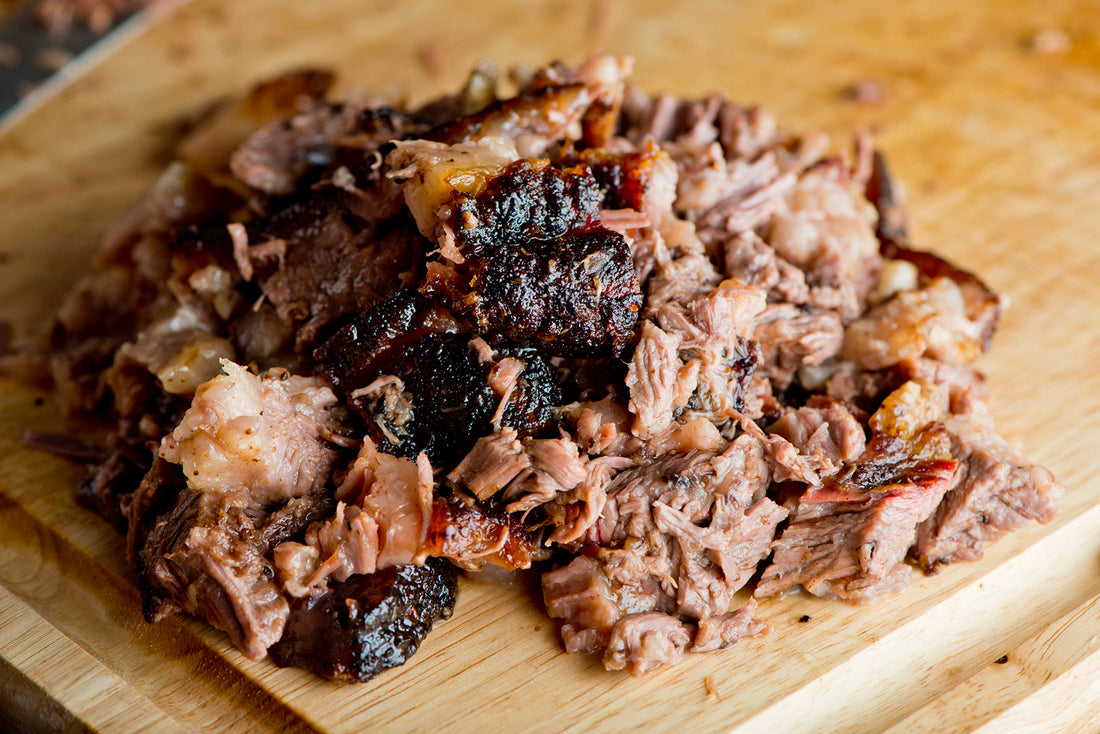Pulled pork is a staple of barbeque. So who am I to suggest anyone change how they break up a smoked pork shoulder or similar cut? But let me at least suggest you try chopping your next smoked pork butt. I think you’ll see that the traditional way may be perfectly good, but it isn’t necessarily perfect.
Why I Think You Should Chop Smoked Pork Instead of Pulling It
The most popular cut for pulled pork is the shoulder, also known as the picnic roast or pork butt. It’s a tough muscle that requires a long, slow-and-low cook time, whether you’re braising or smoking it. Part of the tough nature of the cut is the long strands of muscle, called the grain. When the muscle breaks down in the slow cooking process, it’s easy to pull apart the meat along the grain. But the long strands remain.
It’s that same long grain that makes meats tougher to chew. You may be familiar with slicing steaks (like flank or skirt) against the grain to make them more tender. By shortening the grain with slicing, it reduces the connective tissue so your teeth have less to chew through. The same idea works with chopping smoked pork. Now, because of the slow cooking process, the meat is already quite tender, so be careful not to overdo it, turning your pork shoulder into baby food. But by chopping your smoked picnic roast into even 1- to 2-inch pieces and letting it fall apart naturally, you’ll create a more tender bite that’s not complete mush.
Choosing a Knife
Choosing the wrong blade for chopping smoked pork will end up causing you more trouble than it’s worth. A good BBQ chopping knife should be about 12 inches in length and much wider than a chef’s knife (think cleaver). Even better, use a cleaver-shaped blade with a curved edge (like our The Chopper knife), which allows for an even easier chop with a slight rocking motion.
Shape is one thing, but the right materials will help you get the job done with ease. Opt for high-quality Elmax steel blades, as they provide the optimal combination of durability, sharpness retention, and resistance to corrosion. This material ensures that your BBQ knife can withstand the demands of heavy use, while retaining its cutting edge for precise and effortless chopping.
Lastly, a good BBQ knife should be easy to clean and maintain, and built to last. Elmax steel is stain-resistant and requires minimal effort to keep clean, so you can focus on your meal, not babying your knife.
Chopping Smoked Pork
Make sure your pork shoulder hits that magical internal temperature of 205°F. Then take it off the smoker and let it rest between two and four hours. At this point, it’ll be ready to chop.
You’ll only need three tools for chopping:
- A rounded cleaver-shaped BBQ chopping knife
- A fork to hold the meat while chopping
- A large cutting board or butcher block surface
Chopping the smoked pork is about as easy as you’d think:
- First, pull large strips of pork off the shoulder. This is like the first step of pulling pork, but you won’t continue to pull those pieces into smaller strands.
- Next, anchor one of the pulled chunks with your knife, and chop against the grain every inch or so.
- Repeat until you’ve broken the roast down into smaller, 1-inch-long chopped pieces.
- That’s it. If you like your smoked pork dressed in sauce, you can do that now, or wait until it’s served.
With the right technique and the perfect tool, chopping smoked pork becomes an enjoyable and rewarding experience. So ditch the forks, grab your Williams Chopper, and unlock a whole new world of smoky, textural bliss in your next smoked pork dish.
